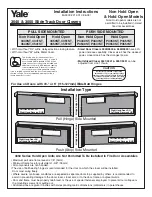
5
www.strata.co.nz
EZIARC 160 • EZIARC200
*Denotes more detailed explanation of function to follow.
1.
Power Indicator. Lights when input power
connected and machine switched on
2.
Error/ Overload Indicator*
3.
Welding Current Control Knob
4.
Negative (-) Welding Power Output
Connection Socket
5.
Positive (+) Welding Power Output
Connection Socket
6.
Welding Output Mode Switch.
Sets Power Source in MMA or Lift Tig Mode*
7.
Digital Current Display Meter
1
2
3
4
6
5
7
Further Controls Explained
Overload/ Error Indicator
Lights when over voltage, over current or electrical
overheating (due to exceeding duty cycle) is detected
and protection is activated.
When protection is activated, welding output will be
disabled until the safety system senses the overload
has reduced sufficiently and indicator lamp goes out.
May also trigger if machine experiences an internal
power circuit failure.
Lift Tig Mode
Lift TIG is an arc ignition system for basic TIG weld-
ing that removes the need to ‘scratch’ start or strike
the tungsten on the work piece to start the arc, which
can have a negative effect on the weld quality due to
tungsten contamination.
Lift arc starting works by gently touching the tungsten
on the work piece and then lifting it off. The control
circuit will sense when the tungsten is removed from
the work piece and send a pulse of electricity through
the torch that will cause the TIG arc to initiate.
Tips & Tricks
Duty Cycle Rating
Welding duty cycle is the percentage of actual weld-
ing time that can occur in a ten minute cycle. E.g.
20% at 160 amps - this means the welder can weld at
160 amps for 2 minutes and then the unit will need to
be rested for 8 minutes.
All duty cycle ratings are based on an ambient air
temperature of 40°C with 50% humidity, which is the
international standard for such a rating. In an envi-
ronment with temperatures exceeding 40°C, the duty
cycle will be less than stated. In ambient temperature
less than 40°C, duty cycle performance will be higher.
Know Your Machine






































